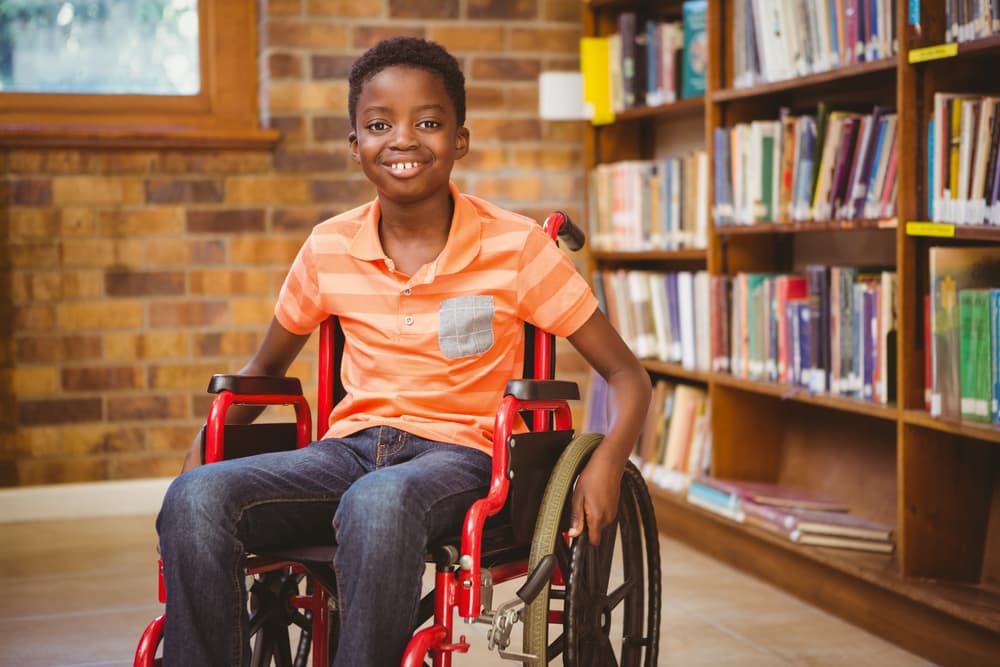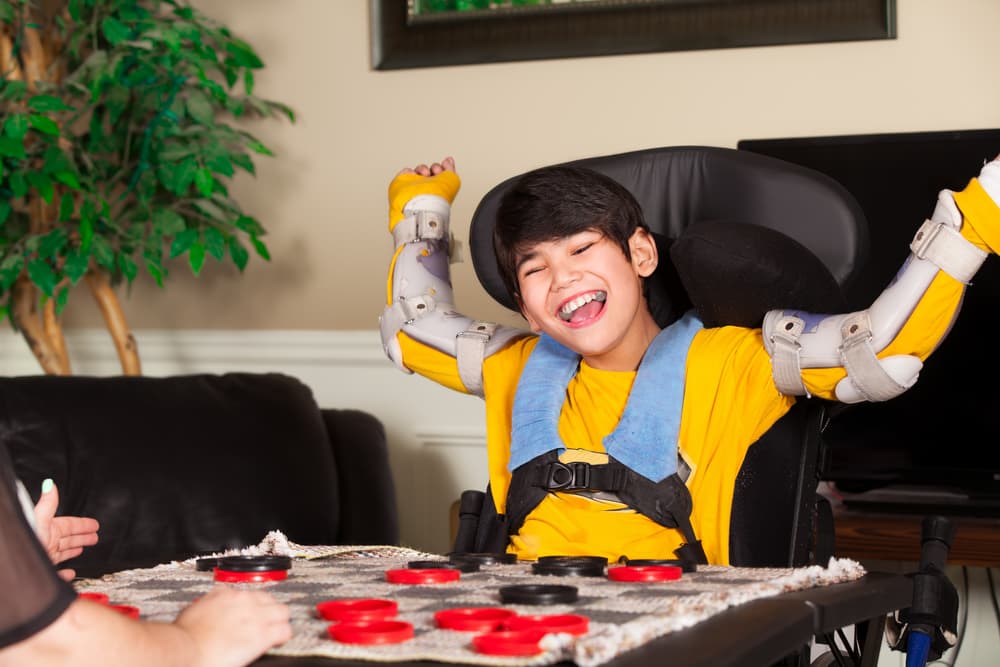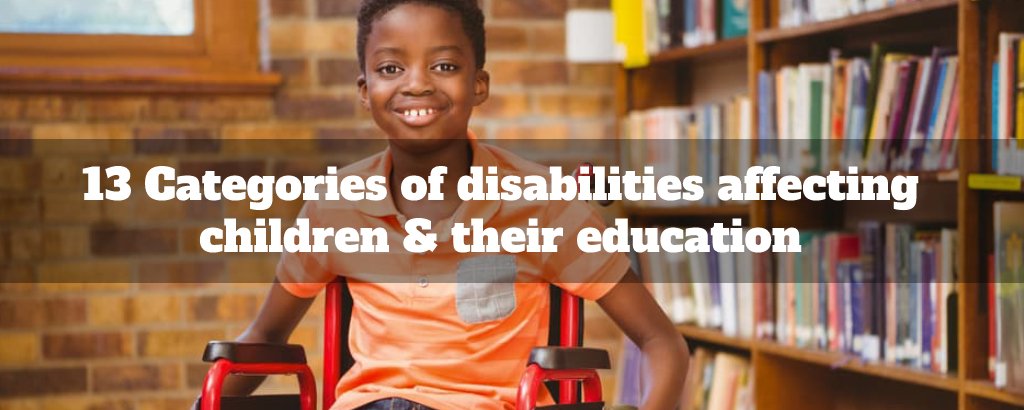There are 13 categories of disabilities that can adversely affect a child’s educational performance, social development, and overall quality of life.
These 13 categories include physical impairments, learning difficulties, emotional and behavioral disorders, health impairments, and other conditions that interfere with the ability to learn. Understanding these 13 categories is important to provide effective support for children experiencing any disability.
Let’s get right into it.

The 13 categories of disabilities
Physical Impairments
Learning Disabilities
Emotional and Behavioral Disorders
Intellectual Disabilities
Autism Spectrum Disorder (ASD)
Attention Deficit Hyperactivity Disorder (ADHD)
Speech or Language Impairment
Visual Impairment/Blindness
Hearing Loss/Deafness
Multiple Disabilities
Developmental Delay
Health-Related Conditions
Traumatic Brain Injury or Cerebral Palsy
The 13 categories of disabilities encompass a wide range of conditions, but some are more common than others in affecting children’s educational performance, social development, and overall quality of life; these commonly occurring disabilities include physical impairments, learning difficulties such as ADHD and autism spectrum disorder (ASD), emotional and behavioral disorders such as depression, intellectual disabilities related to cognitive delays or intellectual deficits, health impairments due to chronic illnesses or medical conditions, speech or language impairments that can hinder communication and comprehension skills for the child in question, visual impairment/blindness which affects the ability to process information visually received by the individual affected by it, hearing loss/deafness which hinders understanding.
Numerous programs are available to help children with their educational performance, social development, and overall quality of life. These programs can range from specialized educational classes to individualized learning plans designed to accommodate the needs of each child. They can also include interventions such as physical and occupational therapy.
For example, California is committed to helping children with autism, and numerous resources and programs are available to support them. One example of such a program is the California Autism Services Project (CASP). CASP provides services including professional development and training for educators, assessment, diagnosis, and treatment of children with an autism spectrum disorder.
CASP provides services including professional development and training for educators, assessment, diagnosis, and treatment of children with an autism spectrum disorder. This program helps parents understand their child’s needs better so they can provide the best possible care and support for them. With CASP’s help, parents can access specialized education classes and individualized learning plans that accommodate each child’s unique needs.
Additionally, interventions such as physical and occupational therapy are also available through this program so that every parent has the tools they need to ensure their child receives the best care possible.
What are physical impairments?
Physical impairments can make it harder for a child to learn. Some physical impairments are trouble walking, using their hands, or seeing and hearing. These can make it more difficult to write, take tests, or follow instructions in school.
Blind and deaf kids can still learn in school. Schools have special programs and teachers to help them. They use Braille for blind kids to read or sign language for deaf kids to communicate.
What are learning disabilities?
Learning disabilities make it hard for kids to learn. They might have trouble understanding what they read, writing down, or doing math.
Schools can help kids with learning disabilities by providing special programs and teachers. Blind and deaf kids can also get help using Braille to read or sign language to communicate.
Parents can work with the school to get their child extra help in the classroom, like tutoring or the one-on-one attention from a teacher.
What are emotional and behavioral disorders?
Emotional and behavioral disorders can make it hard for kids to learn. These disorders might make kids feel frustrated, angry, sad, or scared, making it difficult to focus on school work.
Examples of these disorders include depression, anxiety, and ADHD. To help with these issues, parents can work with the school to get their child extra help in the classroom.
They may also need to talk to a doctor or therapist who specializes in helping kids with emotional and behavioral problems.
What is visual impairment/blindness?
Visual impairment or blindness is when it’s hard for someone to see. The federal government offers programs to help people who have this issue. They can get special classes and teachers, as well as help with physical and occupational therapy.
With these programs, parents can understand their child’s needs better to give the best care possible.
What is hearing loss/deafness?
Hearing loss or deafness means it is hard to hear. Some special programs and teachers can help kids who have this problem.
They can learn how to use sign language so they can communicate better with others. There are also physical and occupational therapy programs that help with hearing issues so kids can learn in school better. Parents should work with the school to get extra help for their child if needed.
Occupational therapy programs for deaf kids provide them with the necessary tools and strategies to thrive in their learning environment. Occupational therapists help to improve the child’s ability to perform everyday tasks such as self-care, communication, leisure activities, education, and work. These goals are reached through various approaches, including sensory integration and motor skill development.
What about developmental delay?
Developmental delay is when a child does not reach developmental milestones at the same rate as other children their age. This can be due to several factors, such as physical impairments, learning disabilities, emotional and behavioral disorders, and visual or hearing impairments. Common developmental delays for children include communication, social, and motor skills.
Parents and teachers can help kids with developmental delays by understanding their needs better and providing extra help in the classroom. They can get special classes, teachers, and physical and occupational therapy programs to help the child reach goals like communication, social, and motor skills. Parents may also need to talk to a doctor or therapist who specializes in helping kids with emotional and behavioral problems.
For example, in New York State, several programs are available to help children with developmental delays. The Early Intervention Program (EIP) provides services for infants and toddlers from birth to three years old who have either a confirmed disability or are at risk for one. Services are provided in the home and include physical and occupational therapy.
What is Traumatic Brain Injury or Cerebral Palsy?
Traumatic Brain Injury (TBI) and Cerebral Palsy (CP) are two conditions that can make it harder for children to learn in school.

TBI is when someone has an injury to their brain, while CP is when someone’s muscles don’t work as they should.
These conditions can cause problems with language, behavior, movement, and learning. Parents and teachers can help kids with these conditions by understanding their needs better and providing extra help in the classroom.
Why do we need to understand our kids more
It is important to understand the 13 categories of disabilities affecting children and their education to ensure they receive the best care possible.
By understanding these disabilities, parents can better provide for their children’s needs and work with school systems to ensure they receive the proper help.
Before you go
Take a look at our article on shoes for handicapped adults and the top life skills for adults with disabilities.
These articles will help you prepare your kids if they have a physical disability.

